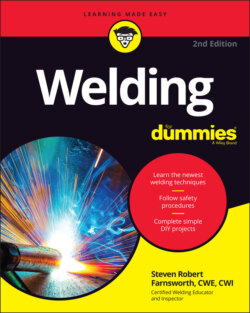Читать книгу Welding For Dummies - Steven Robert Farnsworth - Страница 46
Eyeing aluminum welding techniques
ОглавлениеIf you ask me, welding aluminum isn’t any more difficult or problematic than welding steel. It can take some getting used to, but after you have the hang of it, you can weld aluminum quickly and efficiently by using any one of the three major arc welding methods: stick, tig, and mig.
My first choice for welding aluminum is always tig welding. You need to use alternating current (AC) with continuous high frequency to get the best results. (If those terms don’t make any sense, flip over to Chapters 7 and 8 for more information on tig welding.) And as with all other tig welding endeavors, make sure you select the right tungsten electrode and shielding gas for the job.
If you’re going to be welding thicker pieces of aluminum, consider going with mig welding. As with stainless steel (see “Going with Stainless Steel” earlier in the chapter), aluminum can take a long time to weld if you’re working with thick pieces, and mig welding makes the process go faster. Be sure to keep your electrode wire clean, use a 30-degree leading travel angle, and go with pure argon for your shielding gas. (If those details are Greek to you, check out Chapters 9 and 10.)
So what about using stick welding for aluminum? Well, it can be done, but I wouldn’t recommend it if you can go with tig or mig instead. Not many stick welding electrodes are available for working with aluminum, and maintaining good arc stability is tough. On top of that, you have to fight a constant battle to make completely sure that you keep the covering on the electrode extremely clean and dry, or you’re sunk. Bottom line: Avoid stick welding aluminum unless you simply have to do it.
